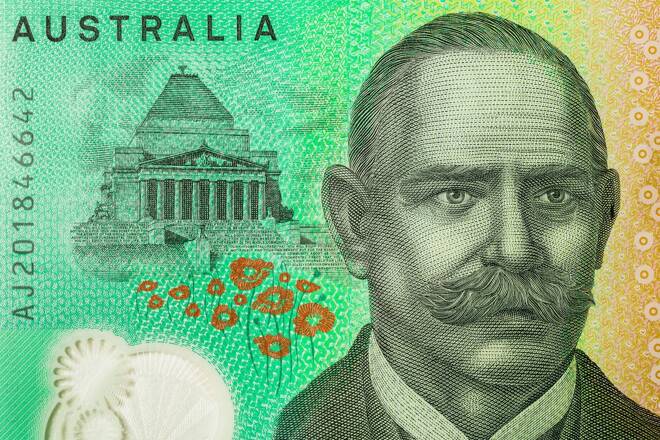Advertisement
Advertisement
AUD to USD Forecast: PBoC Rates and US Economic Data to Drive Sentiment
By:
Key Points:
- On Monday, the People’s Bank of China (PBoC) will be in focus, with China’s central bank setting loan prime rates for April.
- Later in the day, the Chicago National Activity Index also needs consideration.
- It is a pivotal week for the AUD/USD pairing, with inflation numbers likely to significantly influence near-term price trends.
The People’s Bank of China (PBoC) and Potential Fiscal Stimulus
On Monday, the People’s Bank of China (PBoC) will set the one-year and five-year loan prime rates (LPR). Economists expect the PBoC to leave the one-year and five-year LPRs at 3.45% and 3.95%, respectively.
An unexpected cut to an LPR could influence buyer appetite for the Aussie dollar and riskier assets. Looser monetary policy conditions could drive demand. An improving demand environment would boost the Australian economy and the Aussie dollar.
China accounts for one-third of Australian exports, with 20% of the Australian workforce in trade-related jobs. Improving trade terms could influence job creation and wage growth. Upward trends in wage growth may fuel consumer spending and demand-driven inflation. The net effect could be a more hawkish RBA rate path to raise borrowing costs and reduce disposable income.
The Chinese economy is a consideration for the RBA. In the March press conference, RBA Governor Michele Bullock affirmed that the forecasts considered the effects of a weaker Chinese economy.
While economists expect the PBoC to leave the LPRs unchanged, the markets await a fiscal stimulus package from Beijing. A meaningful stimulus package from Beijing could have more impact on buyer demand for the Aussie dollar than further PBoC measures. Therefore, investors should also monitor stimulus chatter from Beijing.
US Economic Calendar: Chicago Fed National Activity Index
The Chicago Fed National Activity Index (CFNAI) will draw investor attention on Monday. The Index has 85 components, reflecting economic activity and inflationary pressures.
Economists forecast the CFNAI to increase from 0.05 to 0.09. Better-than-expected numbers would support expectations the US could avoid a recession. Moreover, an uptrend in the CFNAI may further reduce investor bets on multiple 2024 Fed rate cuts.
Recent US economic indicators, including inflation and retail sales, have sunk bets on a June Fed rate cut. The numbers also reduced expectations of a September Fed rate cut.
According to the CME FedWatch Tool, the probability of the Fed leaving interest rates at 5.5% in September stood at 35.5% (April 19). On April 12, the chances of the Fed holding interest rates at 5.50% was 23.5%.
Short-Term Forecast
Near-term AUD/USD trends will hinge on inflation numbers from Australia (Wed) and the US (Fri). Hotter-than-expected US inflation numbers could further reduce bets on a September Fed rate cut. However, higher-than-expected inflation numbers from Australia could reignite expectations of an RBA rate cut. An RBA rate hike would tilt monetary policy divergence toward the Aussie dollar.
AUD/USD Price Action
Daily Chart
The AUD/USD hovered well below the 50-day and 200-day EMAs, sending bearish price signals.
An Aussie dollar break above the $0.64582 resistance level would support a move toward the $0.65 handle. A return to the $0.65 handle could give the bulls a run at the 50-day EMA.
The PBoC, Beijing, and the US economic calendar need investor consideration.
Conversely, an AUD/USD fall through the $0.64 handle would bring the $0.62713 support level into view.
Given a 14-period Daily RSI reading of 37.91, the AUD/USD may fall to the $0.63500 handle before entering oversold territory.
About the Author
Bob Masonauthor
With over 20 years of experience in the finance industry, Bob has been managing regional teams across Europe and Asia and focusing on analytics across both corporate and financial institutions. Currently he is covering developments relating to the financial markets, including currencies, commodities, alternative asset classes, and global equities.
Latest news and analysis
Advertisement
